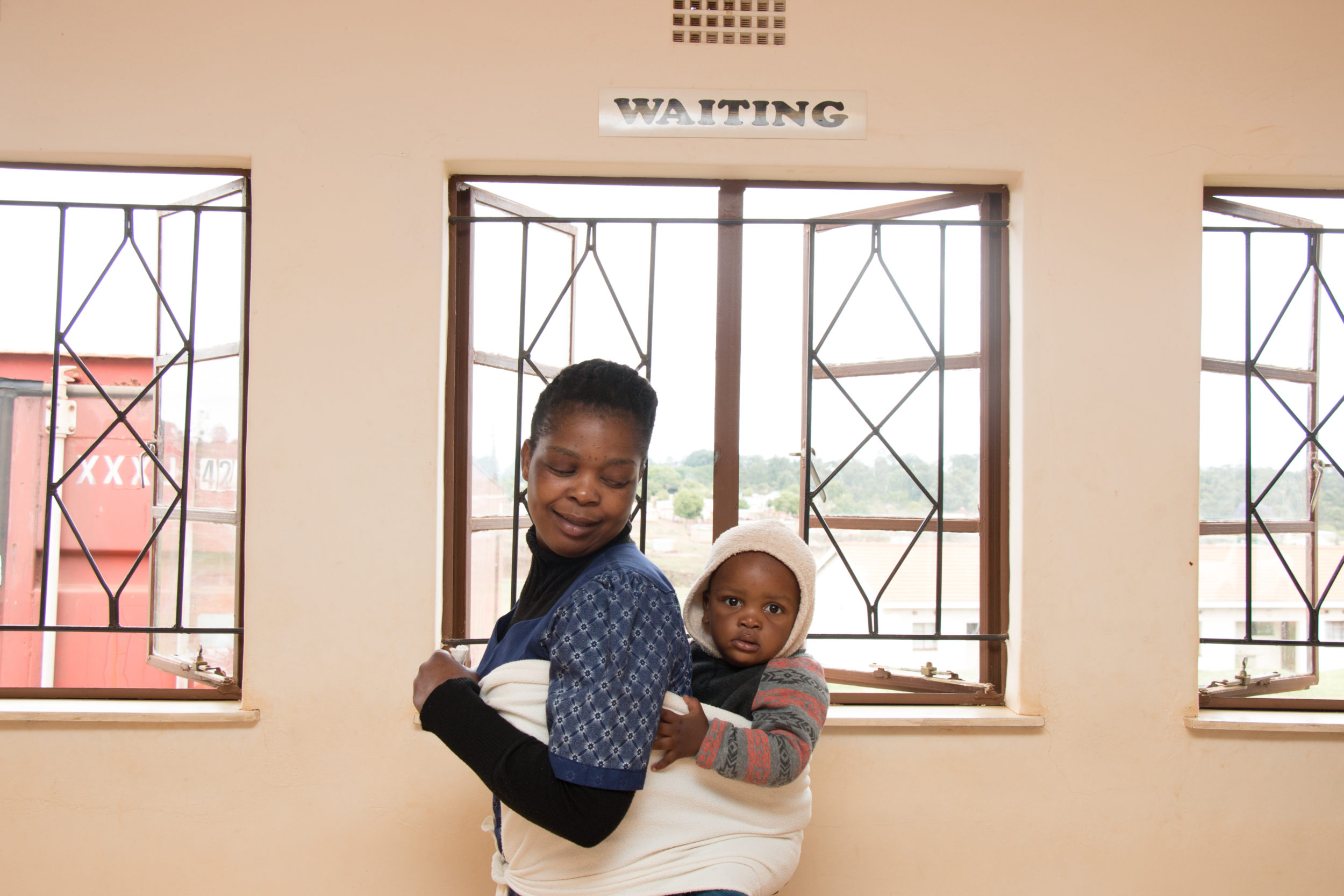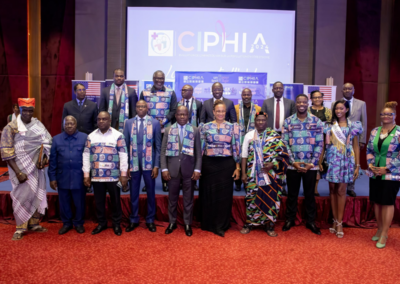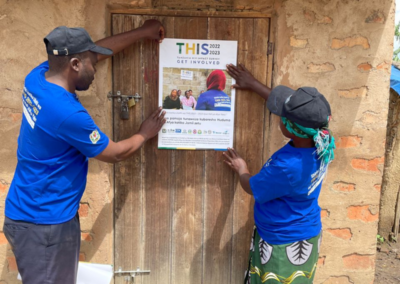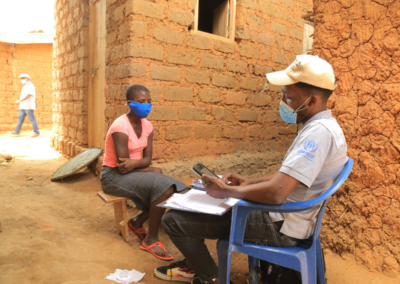PRESS RELEASE
CONTACTS:
Curran Kennedy
ICAP at Columbia University
ck2878@columbia.edu
PARIS, July 24, 2017
Key findings from the second Swaziland HIV Incidence Measurement Survey, SHIMS2, reveal impressive progress in confronting the HIV epidemic in the country. Results show a doubling in population viral load suppression since 2011 and a decrease by nearly half in the rate of new HIV infections. The findings were released today at a press conference held by the Prime Minister’s office in Mbabane, Swaziland and at the International Aids Society (IAS) 2017 Conference in Paris, France.
“Because of the severe HIV epidemic in Swaziland, it was critical for us to implement a combination HIV prevention package, scale up HIV care and treatment services, and engage in ongoing measurement of HIV incidence in order to assess the impact of these efforts,” said Senator Sibongile Ndlela-Simelane, the honorable Minister of Health, Swaziland. “The results of the SHIMS2 survey reveal a dramatic improvement in the state of the epidemic in Swaziland and we are very encouraged by this progress. We understand that the battle is not over, and therefore we must maintain the momentum.”
The data come from one of the population-based HIV impact assessment (PHIA) surveys led by the Government of the Kingdom of Swaziland (GKoS) through the Ministry of Health (MOH) and Central Statistical Office (CSO). The survey (SHIMS2) was implemented by ICAP at Columbia University and the US Centers for Disease Control and Prevention (CDC), with funding from the President’s Emergency Plan for AIDS Relief (PEPFAR).
SHIMS2 is the second national incidence survey to be conducted in Swaziland, following the 2011 survey (SHIMS1) among adults 18-49 years of age.
In SHIMS2, over 14,000 children and adults participated in this nationally representative survey by agreeing to be interviewed and providing a blood sample for HIV testing.
Key SHIMS2 survey results include:
- The annual rate of new HIV infections (“HIV incidence”) among adults ages 15 years and older was 1.36 percent: 1.70 percent among females and 1.02 percent among males. Among adults 18-49 years, HIV incidence was 1.39 percent, nearly half of the prior HIV incidence rate in 2011 2.48 percent.
- The percentage of the adult population living with HIV (“HIV prevalence”) was 27.0 percent: 32.5 percent among females and 20.4 percent among males. The HIV prevalence among adults 18-49 years was 30.5 percent, similar to the 2011 HIV prevalence of 32.1 percent.
- The percentage of all HIV-positive adults with viral load suppression (VLS), an indication that the infection is under control, was 73.1 percent: 76.0 percent among females and 67.6 percent among males. VLS was estimated using all people living with HIV (PLHIV) as a denominator, regardless of knowing their HIV status or use of antiretroviral drugs. Among all HIV+ adults aged 18-49 years, twice as many had VLS in SHIMS2 as compared to SHIMS1 (71.3 percent compared to 34.8 percent in 2011).
- The percentage of all HIV-positive adults who knew their HIV status was 84.7%; of these individuals, 87.4% reported current use of antiretroviral treatment and, among those reporting treatment, 91.9 percent had VLS. These results indicate Swaziland has made substantial progress toward achieving all three of the “90-90-90’ targets set by UNAIDS to help end the HIV epidemic.
The progress represented by the findings is attributed to the expansion of HIV testing in the country as well as a substantial increase in the number of HIV-positive individuals on antiretroviral drugs from 2011 to 2016. This is combined with other HIV control interventions expanded in the country.
“These remarkable findings from Swaziland add to the evidence base that we are beginning to control the HIV epidemic in several high-burden countries,” said Ambassador Deborah L. Birx, M.D., U.S. Global AIDS Coordinator and Special Representative for Global Health Diplomacy. “They both demonstrate our extraordinary progress in ensuring that older HIV-positive adults are on life-saving treatment and virally suppressed as well as reveal key gaps that remain in reaching younger men and women with HIV services.”
“An amazing array of partnerships lasting over a decade – from collaboration within and between governments to coordination across international organizations and implementers – have brought us to an incredible level of success in the work on HIV and AIDS in Swaziland,” said Lisa J. Peterson, US Ambassador to Swaziland. “These partnerships are about people bringing their time and talents together to effect change. Thanks to these joint efforts, the SHIMS 2 data show that many more people will have the opportunity to share their own time and talents with their families and communities. It is especially important that we sustain and strengthen our collective engagement with Swaziland’s youth to ensure that we achieve an AIDS-free generation.”
“The partnership with the Swazi Ministry of Health was fundamental to the success of the survey,” said Shannon Hader, MD, MPH, director of the CDC’s Division of Global HIV & TB. “As we’ve seen in other countries, the PHIA findings will help the Ministry of Health and its partners to focus resources on urgent program priorities to achieve epidemic control.”
“The findings from SHIMS2 are a testimony to the remarkable commitment by the Government of Swaziland in confronting the HIV epidemic,” said Wafaa El-Sadr, MD, MPH, MPA, director of ICAP. “It is a demonstration that all the efforts put into the scale-up of HIV prevention, care and treatment services have borne fruit. ICAP is honored to have played a role in helping to support this successful scale-up.”
“Each Population-based HIV Impact Assessment – PHIA – survey provides a ‘report card’ on how each country is doing in responding to its epidemic as well as a blueprint for future response,” said Jessica Justman, MD, ICAP’s senior technical director and principal investigator of all of ICAP’s PHIA projects, including SHIMS1 and SHIMS2. “Swaziland has made notable progress and is poised to continue making great strides forward with the implementation of test and start and ongoing scale-up of routine viral load monitoring. The SHIMS2 results will help focus efforts and prioritize specific populations in need of urgent attention and innovative approaches.”
Other collaborating governmental entities in Swaziland included the Health Research Unit, Swaziland Health Laboratory Services (SHLS), Swaziland National AIDS Program (SNAP), Health Promotion Unit, Health Management Information System, Environmental Health Department, and National Emergency Response Council on HIV/AIDS (NERCHA).
Additional details on SHIMS2 are available in the summary sheet released by the Swaziland Ministry of Health and the websites for the Ministry of Health www.gov.sz , CDC/PEPFAR www.cdc.gov and www.pepfar.gov, and ICAPs PHIA Project: phia.icap.columbia.edu.
About ICAP at Columbia University
ICAP was founded in 2003 at Columbia University’s Mailman School of Public Health. A global leader in HIV, tuberculosis, other health threats and health systems strengthening, ICAP provides technical assistance and implementation support to governments and non-governmental organizations. More than 2.2 million people have received HIV care through ICAP-supported programs and over 1.3 million have received antiretroviral therapy through such support.










